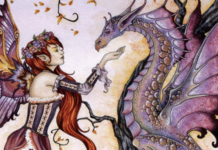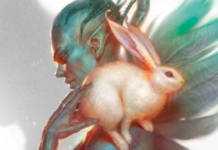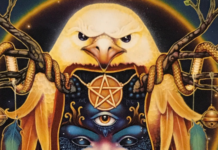
Mystical Origins of the Tarot: From Ancient Roots to Modern Usage
, by Paul Huson
Destiny Books, 0892811900, 335 p. (incl. appendices, notes, bibliography and index), 2004
This is Paul Huson’s second book on tarot; his previous Devil’s Picturebook was a mainstay for tarot enthusiasts. In Mystical Origins of the Tarot he has updated many of his theories in light of new research and opens up new realms of tarot interpretation.
Regarding tarot’s history, Huson’s stance is that “if you take the art of tarot reading seriously (and expect others to), it might behove you to know something about the actual historical roots of your chosen field” – a sentiment with which I fully agree! Many tarot authors continue to perpetuate the old myths – myths which were refuted in the seventeenth century, and for which there is little excuse to see repeated in contemporary texts today. It has now been more than ten years since Ronald Decker, Thierry Depaulis and Michael Dummett wrote A Wicked Pack of Cards, the first in depth study of tarot’s historical roots. Huson acknowledges his debt to these fine scholars (Dummett’s work especially), though also notes where he differs from their conclusions, but it is refreshing to see the scholarly approach he takes in this work on.
Many of tarot’s origin theories are revisited, including the line of thought which attributed the four “minor” suits of the tarot to the “four magical talismans that belonged to the pagan gods of Irish Celtic legend – the cauldron of the Dagda, the sword of Nuada, the stone of Fal, and the spear of Lugh”, which he lightly mocks – a bit cheekily, as he was a proponent of this origin myth in The Devil’s Picturebook!
Huson provides an intriguing theory into tarot’s origins, tracing its roots back to ancient Persia. He believes that symbolic meanings were always an integral part of their use and here his theorizing becomes somewhat less convincing, but remains stimulating.
The trump card analyses derive mainly from medieval and Renaissance mystery plays, from which he quotes liberally from where parallels can be drawn. He also includes cartomantic descriptions from Etteilla, Pratesi’s Cartomancer, De Mellet, Court de Gébelin, Éliphas Lévi, Paul Christian, S. L. MacGregor Mathers, the Golden Dawn, A. E. Waite, tracing the lines of thought, and also offers his own interpretations.
Mystical Origins of the Tarot is Huson’s most solid work to date, and I highly recommend it to all serious students of tarot.








